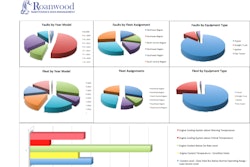Aerodynamic characteristics around the fifth wheel and the trailer’s rear are difficult to manage. The trailer gap is a necessary open space that allows for full articulation as the rig maneuvers in tight surroundings.
But in aerodynamic terms, that massive gap is a huge drag inducer on the entire vehicle. At highway speeds, as air flows past the tractor heading for the trailer, it encounters a large vacuum area created by the gap’s open space.
The same holds true for the back of a trailer. As air passes around it, a natural vacuum forms behind the vehicle that air seeks to fill.
The result is drag, which leads to aerodynamic inefficiency. Drag makes a vehicle more difficult to move down the road efficiently. The engine must work harder to overcome it, burning more fuel as a consequence.
Smart fleet managers understand the importance of reducing these large areas of turbulence and drag. Fortunately, tractor-trailer aerodynamics have become better understood in recent years, leading to new devices that help smooth airflow past the trailer gap and behind the trailer.
“Until about 2000, tractors and trailers were really manufactured in isolation from each other,” says Kent Smerdon, vice president of international marketing for Aeroserve Technologies, which manufactures and sells Airtab vortex generators. “This concept is changing, with the industry appreciation that a large gap is an aerodynamic and fuel problem area.”
Today’s aerodynamic innovations include high-rise condo – or load-height matching – full fairings and side extenders. “From the trailer side of the equation, rounded front corners and devices such as nose cones have helped with drag reduction efforts,” Smerdon says.









